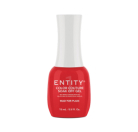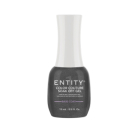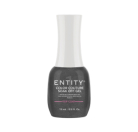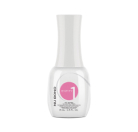TIPS & TRICKS
The Ultimate At-Home Gel Polish Guide: Solutions for the Most Common Application Issues
There’s nothing more frustrating than sitting down to do a gel polish manicure only to be faced with wrinkled or peeling results. For many beginners, the road to a perfect gel polish application is not without its challenges. From streaky finishes to premature chipping, navigating the pitfalls of at-home gel polish can be an exasperating experience. But it doesn’t have to be! Here, we will discuss the top five most common problems encountered with gel polish, giving you practical solutions and expert tips to overcome these obstacles. Regardless of how experienced you are in the nail game, arming yourself with the knowledge to troubleshoot these issues will help you achieve salon-worthy results.

Peeling
The No. 1 complaint about gel polish is peeling. This often occurs because the natural nail hasn’t been prepared sufficiently before product application. When oils and debris are left on the nail, it makes it difficult for product to adhere properly. In addition to pushing back your cuticles, lightly remove the shine from your nails as part of your prep. This gives the gel base coat something to hold on to. Gently file the nail plate with a 180-grit buffer. Use a light hand; less is more here. If you overly file, you could damage your nail plate, which will make peeling a regular occurrence. Then, with a cotton pad saturated with isopropyl alcohol, use a rubbing motion to thoroughly clean the dust and any remaining oil from the nail plate. Another reason peeling can occur is because your nails have been exposed to excessive amounts of water or chemicals. Make sure that any time you’re washing dishes, gardening or cleaning that you wear gloves in order to protect your manicure.
Lifting
Remember, gel polish is different than lacquer in that it can’t be fixed after the curing process. So if you get gel on the cuticle area or in the groove of your sidewalls (on the side where your nail meets the skin) and it cures, it can create a ledge that, as it grows out, will be prone to lifting. Once it starts lifting, water can get underneath (a one-way ticket to lifting), not to mention it can also get caught in your hair and clothes, causing the gel to lift right off. To avoid this, make sure you keep your application thin. It’s also important to keep a small margin around the perimeter of the nail. If you do get flooding in your cuticles, use the pointed end of an orangewood stick to go around the nail and clean up any excess. Another tip is to apply gel and cure one nail at a time until you become comfortable and practiced with product control. This way, there’s no time for the gel polish to move around your nail and risk slipping into the cuticles.
Streaking and Shrinking
Streaking occurs when you apply gel polish and it pulls away, leaving strips of the natural nail peeking through. It’s as if no matter how much product you use, it won’t seem to stick to the nail. Similarly shrinking occurs when the gel polish, either before or after curing, pulls away from the cuticle area and sides of the nail, seemingly “shrinking” in size. These problems can occur because of two things: 1) There are oils that haven’t been fully removed from the nail, or 2) you’re mixing different brands of product, for example Entity One Color Couture Soak Off Gel and another brand of base coat. To avoid these problems, make sure to fully prep and clean the surface of your nails before moving on to the base coat. Additionally, all components of Entity One Color Couture Soak Off Gel — Base Coat, Color Coat and Top Coat — have been formulated to work together exclusively in order to maintain 21 days of wear. If you start mixing and matching different product brands, breakdown is sure to occur.
Wrinkling
You’ve applied your One Color Couture Soak Off Gel Color and cured. But once you pull your hand out of the light, you realize that the gel looks wrinkled. What’s more, when you touch it, it feels soft and almost squishy. This happens because the gel hasn’t been completely cured. If you put too much product on the nail, the top layer may cure, but what’s underneath could remain soft and uncured. To avoid this, make sure to apply each layer of Soak Off Gel with a thin coat. Also, ensure that you’re using the correct LED light. Again, all Entity One Color Couture Soak Off Gel products are designed to be cured under Entity LED lights. If you’re using something else, it can’t be guaranteed to work properly.
It Just Won’t Stay!
It is possible that you’ve followed all the instruction, implemented every expert trick and your gel polish still won’t stay on. If that’s the case, it could be because your nails are either naturally very flexible or damaged. Given the soft and pliable nature of gel polish, it works best and wears the longest on strong, healthy nails. If you’ve truly tried everything and you’re still getting lifting and peeling, then gel polish may not be for you. Instead, try something with a bit more stability, like Entity Dip or Brush, which will provide more strength for your weak natural nails.
Products mentioned
 SOAK OFF GEL COLOR
SOAK OFF GEL COLOR
 SOAK OFF BASE COAT
SOAK OFF BASE COAT
 SOAK OFF TOP COAT
SOAK OFF TOP COAT
 NU BOND
NU BOND